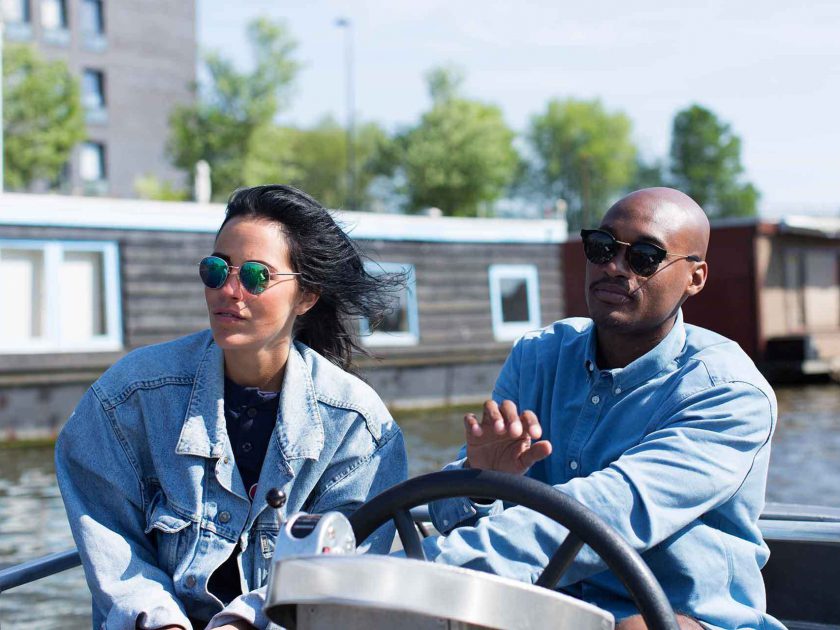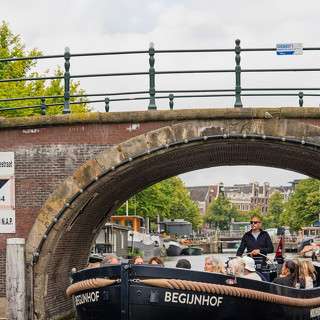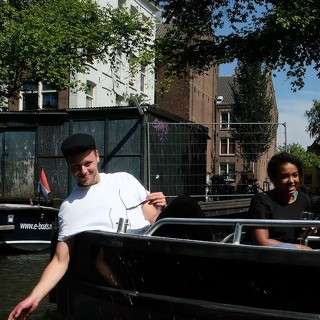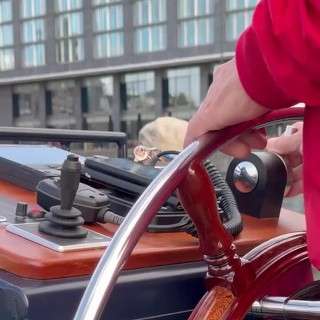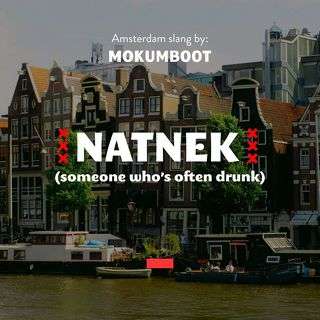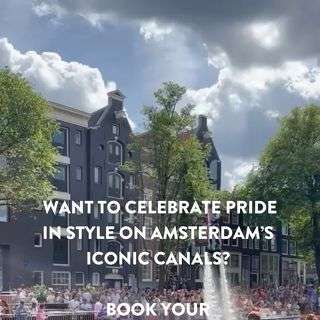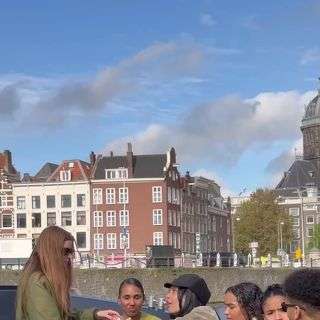
Rent a boat
Sail yourself through Amsterdam, starting from €95,- for 2 hours
Plantage route
The Plantage route takes you along the greenest areas of Amsterdam. During this ‘city safari’ you will see that the city is greener than you thought, with the highlight being the botanical garden – Hortus Botanicus – with more than 6,000 tropical trees and plants. You can even spot exotic animals from your boat, such as elephants and giraffes. The sailing route runs past Artis, so you can catch a glimpse of the oldest zoo in the Netherlands. You will also sail past the interactive NEMO museum and the Tropenmuseum, with exhibitions about the Dutch slavery past.
Download our sailing map
The Plantage route is marked in green on our sailing map. Anyone who rents a boat from Mokumboot will also receive this sailing card prior to his or her trip. Would you like more information about this route? Then read on below. We would like to give you a short impression of this beautiful route:
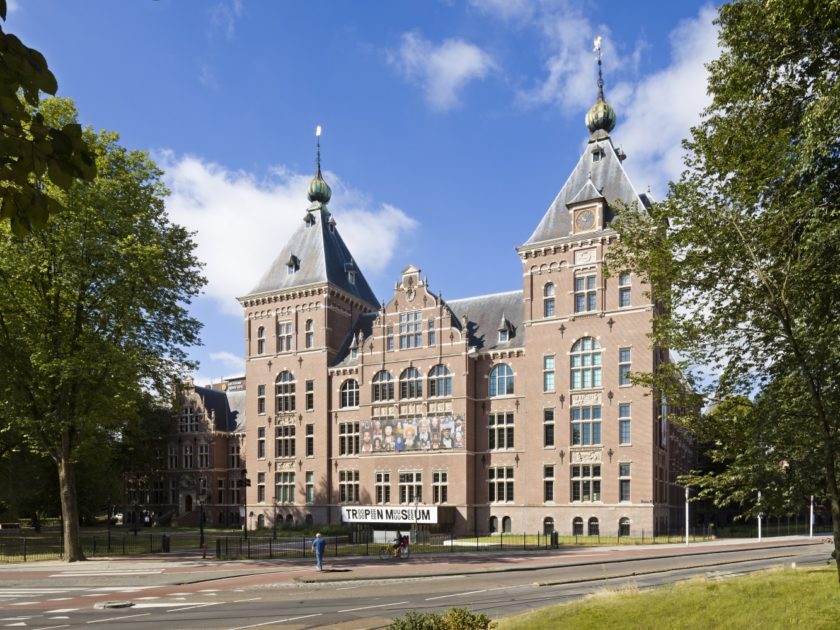
Tropical Museum
The East location of Mokumboot is located opposite the Tropical Museum (Tropenmuseum in Dutch). The Tropical Museum, founded in 1864 as a Colonial Museum, is a Dutch ethnological museum on Linnaeusstraat in Amsterdam. It has a large collection of ethnographic artefacts from tropical and subtropical areas, especially from the former Dutch overseas territories.
Witness stories about universal human themes such as mourning, celebrating, decorating, praying or fighting. They make you curious about the enormous cultural diversity that the world has to offer. In the Tropical Museum you will discover that, despite our differences, we are all the same: human.
All aboard! Start your cruise in a southwesterly direction to the Center. After about 200 meters, just before you pass under the first bridge (265), you will come across the Muiderpoort city gate on your right.
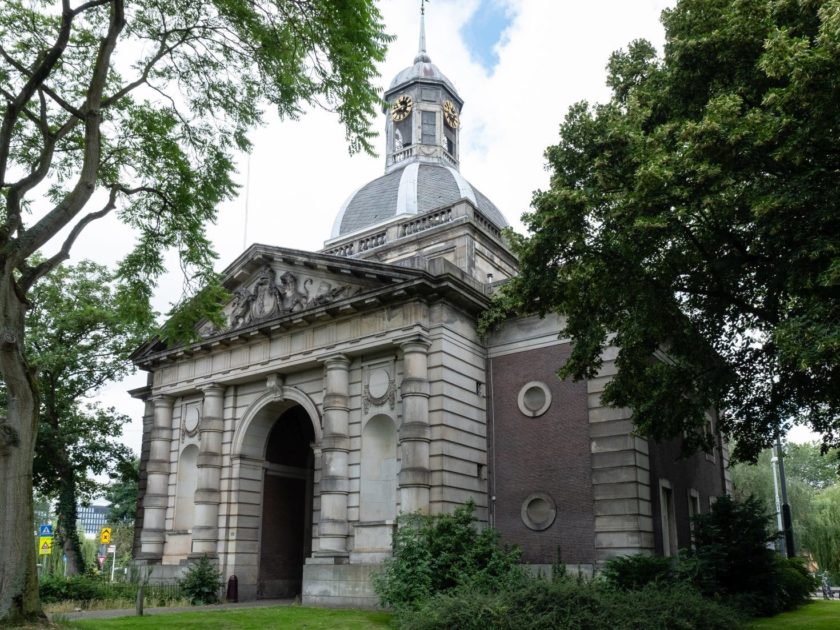
Muiderpoort
The Muiderpoort in Amsterdam is a city gate on Alexanderplein, at the intersection of Plantage Middenlaan with Sarphatistraat. The gate was part of the fortifications of Amsterdam.
The city gate is classicist in design. The gate openings suggest a triumphal arch. The raised central section with balustrade is topped by an octagonal domed tower. The city gate was built in 1770. Fun fact: on October 9, 1811, Emperor Napoleon rode through the gate into the city in a carriage pulled by eight white horses. For the occasion, there was a special arch of honor at the gate. The Dutch Association of Tax Advisors has been located there since 2002. The Muiderpoort is a national monument.
Cruise down the Singelgracht and turn right onto the Amstel just after the Amstelhaven restaurant.
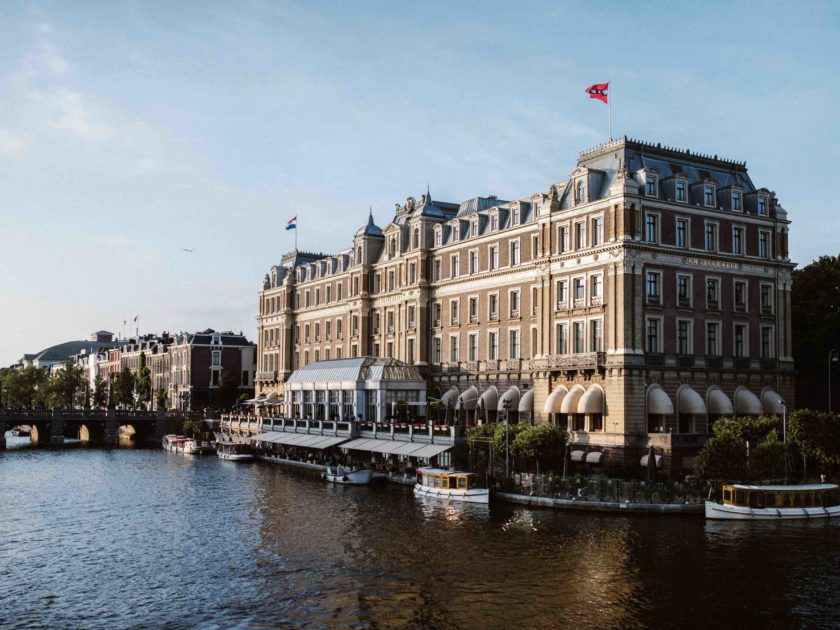
Amstel Hotel
Immediately upon arrival on the Amstel you will see the beautiful Amstel Hotel on your right. The Amstel Hotel (officially InterContinental Amstel Amsterdam) is a luxurious hotel in Amsterdam. In 2007, the hotel was the only Dutch hotel in the hotel classification of the authoritative World’s Best Hotels by Institutional Investor Magazine.
The U-shaped building was designed by Cornelis Outshoorn in 1863 for Samuel Sarphati. The original main facade was planned on the boulevard, now called Sarphatistraat. Despite problems with financing, the hotel was put into use in the summer of 1867. Although the original building plans provided for four wings, it remained with one wing.
In 2012, the Amstel Hotel is a five-star hotel with 55 rooms and 24 suites. There is also a bar, a brasserie, a restaurant, a fitness room and a swimming pool, which can also be used by outsiders.
Continue towards the Amstel locks.
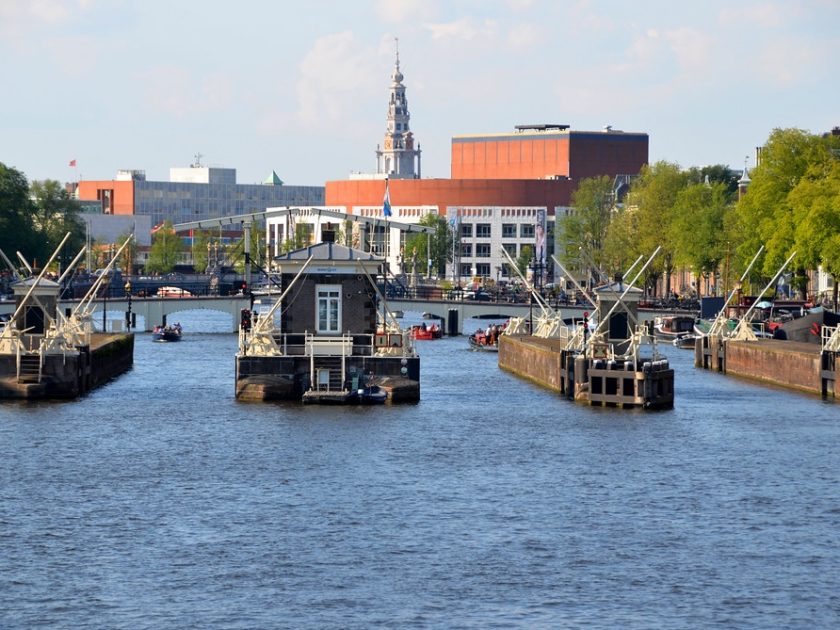
Amstel locks
The Amstel locks (Amstelsluizen in Dutch) are a lock complex in the Amstel river in Amsterdam between the Prinsengracht and the Singelgracht. The locks were constructed in the 17th century and extensively renovated in the 19th century and adapted to new requirements.
The three locks are single-turn and usually open. Since the construction of the Oranjes locks, the lock gates have mainly been open and only closed when there were extreme differences in the water level. The remaining double discharge sluice is located on the east side. The passage width of the western and eastern locks is 8.50 meters. The length is 47 meters.
In the middle is a brick house which housed the bridge keepers from 1673 to 2017. In 2017, the bridge house started a new chapter as one of the 28 suites for SWEETS hotel.
The Royal Theater Carré is located on the east bank of the Amstel near the Amstel locks.
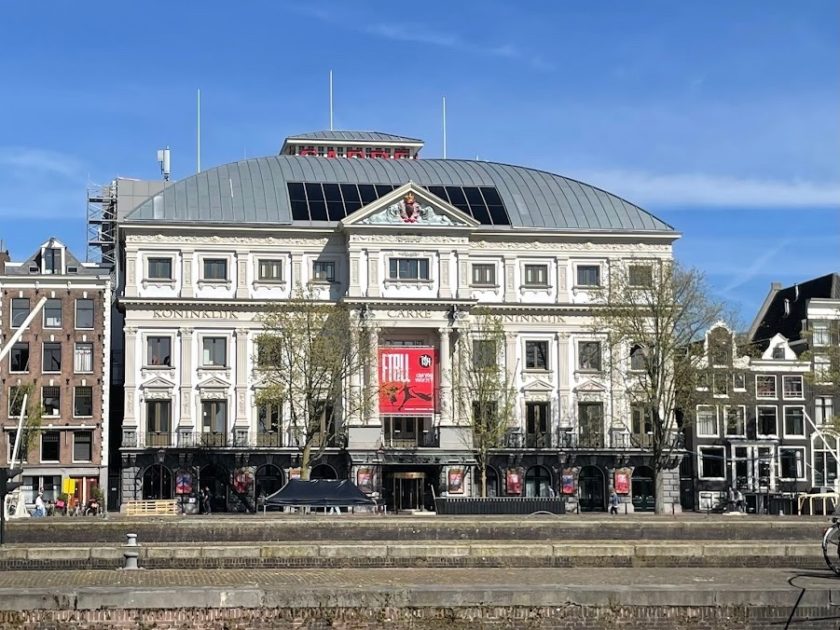
Carré
Here you will find the Royal Theater Carré, which opened on December 3, 1887. The classicist style of the building makes it a beautiful sight on the Amstel. The theater was originally built to house the circus of the same name “Oscar Carré”. However, from 1893 onwards, numerous successful variety performances were also performed, which put Carré on the map as a theater for all kinds of popular entertainment. Nowadays Carré mainly hosts musicals, pop concerts, musical theater and cabaret performances.
Immediately after Carré, turn right onto Nieuwe Prinsengracht and then immediately turn right onto Onbekendegracht. Cruise along the canal and turn left onto Nieuwe Achtergracht. At the end of the Nieuwe Achtergracht, turn right onto Plantage Muidergracht. After 150 meters you will find Artis on your left.
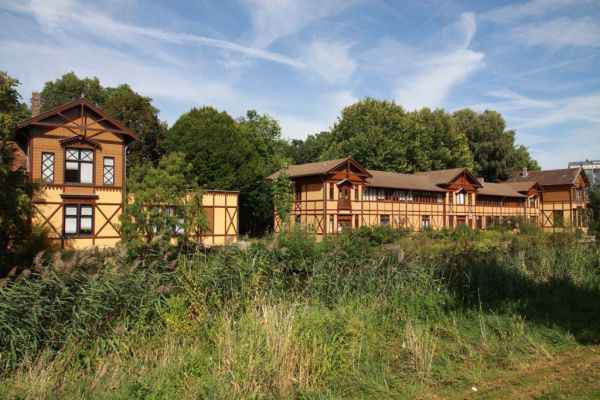
Artis
Artis is the Amsterdam zoo and the oldest zoo in the Netherlands. Artis was founded in 1838 as a garden of the Royal Zoological Society Natura Artis Magistra (“nature is the teacher of art”), which aims to stimulate love and care for nature. The park has 27 monumental buildings that largely date from the nineteenth century.
Artis owns approximately 900 animal species. In the past, the Amsterdam zoo had some very special species in its collection, such as the now extinct quagga, passenger pigeon and marsupial wolf and very rare species such as the fingerling and the shoebill stork.
Cruise around Artis and take the first right. After you have passed the Armand Sunier bridge and the Entrepotdok lock, turn right. Immediately on your right you will find Museum ‘t Kromhout.
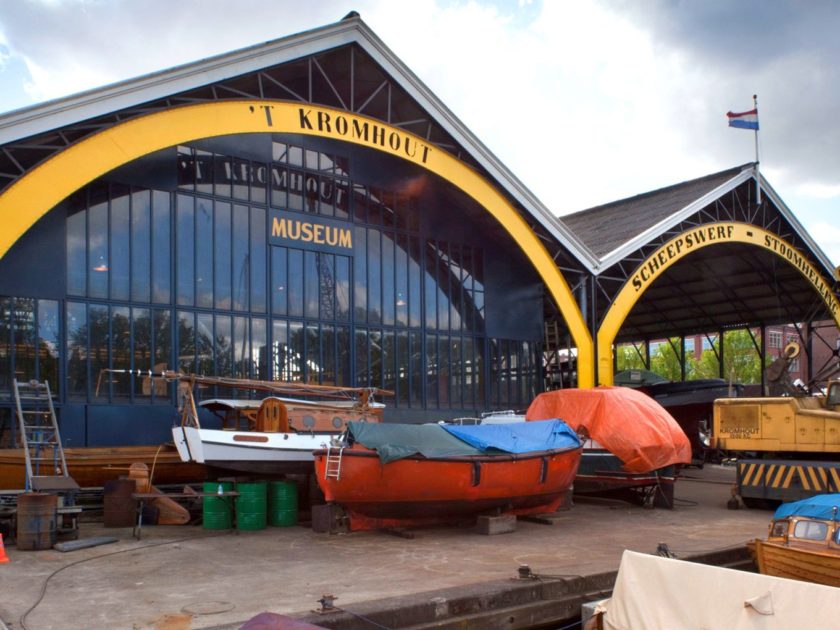
't Kromhout Museum
In an area that was once bursting with small shipyards and nautical industry, the Kromhoutwerf is the only living proof of the economic glory that shipbuilding brought to Amsterdam until the twentieth century. The legendary Kromhout engines were built here until the late 1960s. Many fishing boats used to have a Kromhout engine.
The Shipyard at Hoogte Kadijk was in operation until 1970. In 1973, the Werfmuseum ‘t Kromhout was established here with various engines that can be viewed running. There is also an original and working forge dating from the 19th century.
The Westkap is still in use as a shipyard and is surrounded by old ships. In the Oosthal, a robust floor can be flexibly arranged for events between the historic and still working Kromhout engines.
Sail quietly on towards De Gooyer, the mill in the distance.
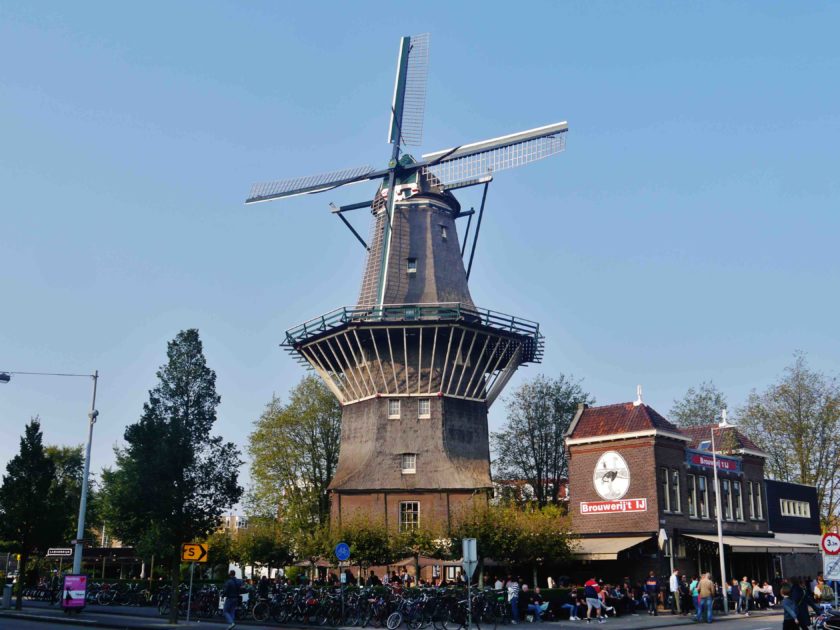
De Gooyer
De Gooyer is a tower mill on the Amsterdam Funenkade. According to some sources, the mill owes its name to the fact that its height overlooks Het Gooi, other sources report that the name comes from two former owners who came from the Gooiland.
The Gooyer consists of two wooden octagons placed on top of each other on a stone base. The mill is owned by Stadsherstel Amsterdam and cannot be visited. The radius of the mill is 26.6 meters. It is the highest wooden mill in the Netherlands.
Brouwerij ‘t IJ is located in the adjacent former Municipal Bathhouse from 1911. Contrary to popular belief, the mill and the former bathhouse do not form a whole from a historical or architectural point of view. The mill does not fulfill any function for this brewery, other than being depicted on the brewery’s labels.
Turn right after the mill and sail back to our rental location. Hope you had a good time! If you would like more, try one of the other sailing routes that we have mapped out for you:
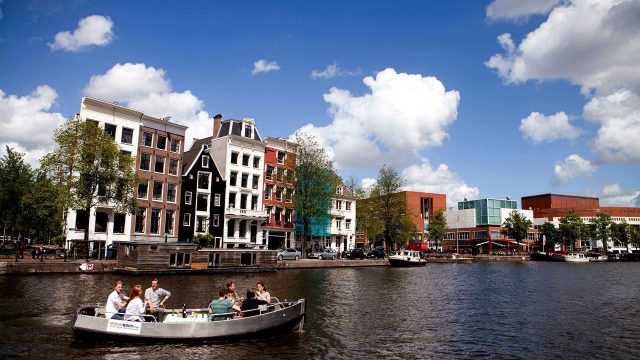
Berlage route
At the beginning of the 20th century, architect Hendrik Petrus Berlage designed a plan for the area south of the center of Amsterdam. Until then, this part of the city was still underdeveloped. Berlage used the Amsterdam School style for his design: stones with different colors, shapes and textures; rounded corners and undulating rooflines, and striking decorations on the exterior of the building. The Berlage route passes many of his buildings; rent a boat and see for yourself whether you can discover all the elements of Berlage’s style in Oud-Zuid.
Berlageroute Amsterdam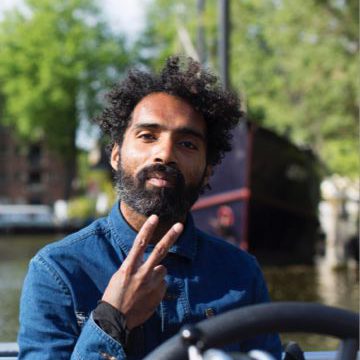
Canal route: 2 hours
Amsterdam is known for its many canals. The waters of the canal belt that demarcate the city center are the best known: the Singel, the Herengracht, the Keizersgracht and the Prinsengracht. On the shore you will find the architecture of the Golden Age: narrow, high buildings with stepped gables and traditional ornaments. Discover this beautiful piece of Amsterdam history while sailing one of the many canal routes. Since 2010, the Amsterdam canal belt has been on the World Heritage List thanks to the unique and irreplaceable character of the canals. You can easily rent a boat at Mokumboot.
Canal route: 2 hours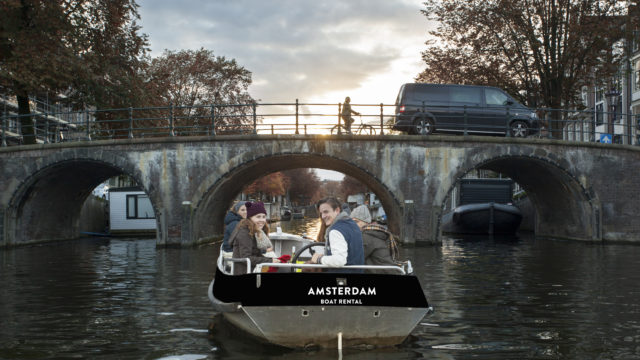
Canal route: 3 hours
Amsterdam is known for its many canals. The waters of the canal belt that demarcate the city center are the best known: the Singel, the Herengracht, the Keizersgracht and the Prinsengracht. On the shore you will find the architecture of the Golden Age: narrow, high buildings with stepped gables and traditional ornaments. Discover this beautiful piece of Amsterdam history while sailing one of the many canal routes. Since 2010, the Amsterdam canal belt has been on the World Heritage List thanks to the unique and irreplaceable character of the canals. You can easily rent a boat at Mokumboot.
Canal route 3 hours
Plantage route
The Plantage route takes you along the greenest areas of Amsterdam. During this ‘city safari’ you will see that the city is greener than you thought, with the highlight being the botanical garden – Hortus Botanicus – with more than 6,000 tropical trees and plants. You can even spot exotic animals from your boat, such as elephants and giraffes. The sailing route runs past Artis, so you can catch a glimpse of the oldest zoo in the Netherlands. You will also sail past the interactive NEMO museum and the Tropenmuseum, with exhibitions about the Dutch slavery past.
Plantage route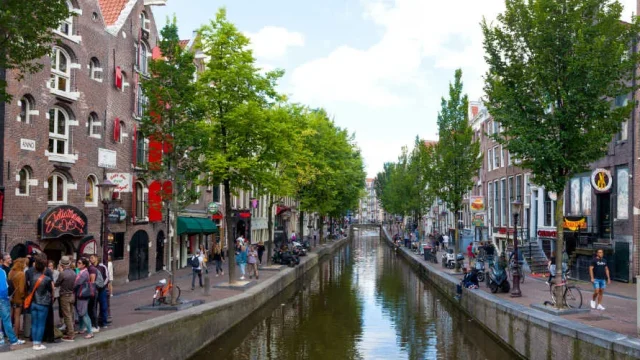
Red Light District route
For most of us and every visitor, this is the most famous part of Amsterdam: the Red Light District. Discover Amsterdam’s Red Light District from the water with the Red Light District route. The streets are always busy with many tourists, but from a boat on the water you have plenty of space to view this old part of the city. In the Red Light District you can see prostitutes behind the windows 24 hours a day. The exciting and lively atmosphere in this Amsterdam district in combination with the rich history of this part of the city makes it definitely worth a visit. Along the way you will sail past the impressive Old Church (Oude Kerk in Dutch), a museum with contemporary art and you will come across various heritage buildings. Please note: sail clockwise on the Red Light District route. It is one-way traffic on the Oudezijds Voorburgwal.
Red Light District routeSail the Plantage route yourself
Call Mokumboot directly for more information about renting a boat or book directly via our online reservation system. Mokumboot is open 7 days a week from 9:00 AM to 10:00 PM.
